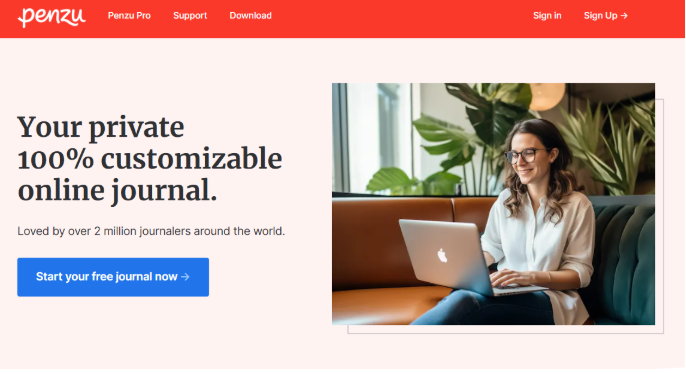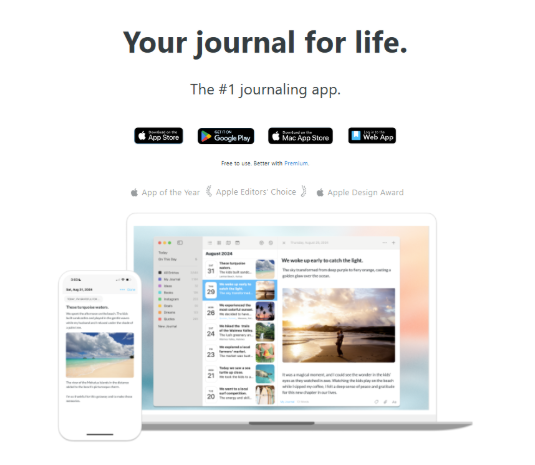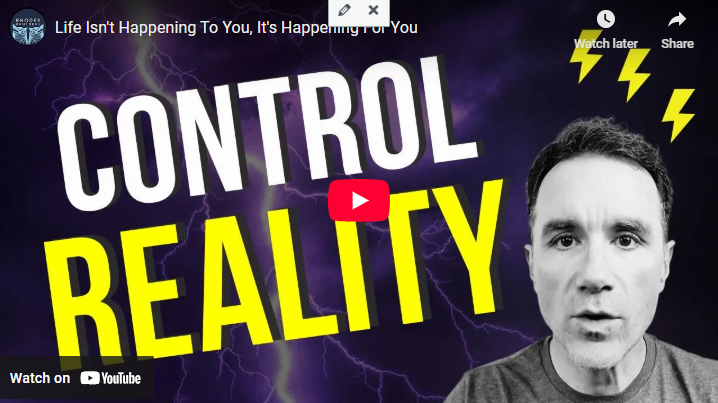For More Free Videos, Subscribe to the Rhodes Brothers YouTube Channel.
“Friction slows us down. Traction moves us forward. But what if they’re two sides of the same coin?” – John S. Rhodes

You’re driving down a winding road, and suddenly, you hit a patch of ice. Your car skids, you lose control, and everything feels chaotic. That’s friction at its worst—an obstacle in your path, causing you to lose momentum. But now picture this: the road beneath your tires changes, giving you grip, stability, and control. That’s traction—a force that propels you forward with purpose.
Friction and traction aren’t just concepts from physics; they’re metaphors for life, business, and personal growth. Whether you’re tackling challenges at work, fixing strained relationships, or chasing a dream, friction and traction play a pivotal role. The key is learning how to turn one into the other.
As John S. Rhodes of the Rhodes Brothers puts it: “The obstacle is the way. When you solve the problem, you create value—not just for yourself, but for others.” This mindset shift isn’t just empowering; it’s profitable. Today, we’ll explore how to reframe life’s inevitable obstacles (friction) and leverage them to create opportunities (traction). Let’s dive in!
TL;DR
- Friction isn’t just a problem—it’s an opportunity. Reframing obstacles can help you grow and innovate.
- Traction is the positive force that moves you forward. It’s about using friction constructively.
- The Stoic principle, “The obstacle is the way,” is key. By solving your problems, you create solutions for others.
- Learn step-by-step strategies to transform challenges into opportunities, backed by actionable tools and examples.
- Avoid common mistakes like bottling up frustration or ignoring the lessons friction teaches.
What Is Friction vs. Traction?
Friction and traction are interwoven forces that affect progress in every area of life. Let’s break them down further, with examples and tools, to understand how they work and, more importantly, how to use them to your advantage.
Understanding Friction: The Resistance That Slows You Down
Friction is resistance—it’s the force that drags on your momentum, holding you back. This can manifest in:
- Personal life: Feeling stuck in a toxic relationship, procrastinating on a fitness goal, or struggling with self-doubt.
- Professional life: A lack of clarity in your career, micromanaging bosses, or dealing with a mountain of unresolved tasks.
- Emotional well-being: Stress, frustration, or anger that drains your mental energy and clouds your judgment.
A powerful example of friction is when deadlines pile up. You’re trying to finish a project, but interruptions—emails, phone calls, or even just mental fatigue—keep pulling you away. This constant resistance not only slows progress but also drains your emotional energy.
Tools to Overcome Friction:

- Journaling Apps: Tools like Day One or Penzu allow you to write about what’s bothering you, identify patterns, and brainstorm solutions.
- Pomodoro Timers: Apps like Focus Keeper break work into small, manageable chunks to combat distraction and procrastination.
Understanding Traction: The Force That Moves You Forward
Traction is the opposite of friction. It’s the force that allows you to grip the ground and push forward with confidence. Traction helps you:
- Focus: It gives you clarity on what to do next.
- Progress: It keeps you moving step by step toward your goal.
- Stability: It prevents you from sliding backward when life throws challenges your way.
Think of traction like a tire gripping the road. Even when the path is uneven or slippery, traction helps you maintain control and move forward.
Example of Traction in Action:
Imagine you’re building a new habit, like exercising regularly. Initially, the friction is high—you struggle to find time, motivation, or even energy to get started. However, once you establish a routine (e.g., a 10-minute workout every morning), you gain traction. Each successful workout builds momentum, making it easier to continue.
Tools to Build Traction:

- Habit-Tracking Apps: Tools like Habitica and Streaks gamify habit-building, keeping you accountable and motivated.
- Project Management Tools: Use platforms like Notion or Trello to break large goals into actionable steps.
The Connection Between Friction and Traction
What’s fascinating is that friction and traction are two sides of the same coin. The very friction that slows you down can also be the force that creates traction. For example:
- Friction (obstacle): You’re overwhelmed by a tight work deadline.
- Traction (momentum): You use the stress of the deadline as motivation to prioritize tasks, eliminate distractions, and finish on time.
As John S. Rhodes explains: “Friction is stored energy. If you harness it, it can power your next move.” In other words, by reframing obstacles, you can transform resistance into fuel for progress.
How to Transform Friction into Traction
Turning friction into traction might sound like a lofty goal, but it’s entirely achievable with the right mindset and actions. The secret lies in understanding where resistance is coming from and using that resistance to propel yourself forward. Below, we break down the process into actionable steps that will help you transform roadblocks into stepping stones.
Step 1: Identify the Source of Friction
The first step is to figure out what’s causing the resistance in your life. This might be emotional, professional, or interpersonal.
Common Sources of Friction:
- Emotional: Stress, anger, or self-doubt.
- Professional: Overwhelming tasks, unclear goals, or lack of support.
- Interpersonal: Miscommunication or unresolved conflicts.
Example:
If you’re feeling unmotivated at work, the source of friction might be a lack of recognition for your efforts. By identifying this, you can take steps to address it—whether it’s asking for feedback or seeking new opportunities.

Tool to Try: Journaling is a fantastic way to identify friction points. Apps like Day One let you reflect on your thoughts and emotions, helping you pinpoint the root cause of resistance.
Step 2: Reframe the Obstacle
Once you’ve identified the friction, the next step is to reframe it. Instead of seeing it as a problem, view it as an opportunity to grow.
Ask Yourself:
- What can I learn from this situation?
- How can I use this experience to improve?
Example:
If you’ve failed at a new project, instead of dwelling on the failure, analyze what went wrong. Perhaps you lacked proper planning or underestimated the time required. Use this insight to approach future projects more strategically.
Actionable Tip: Practice gratitude for challenges. Research from Harvard shows that a gratitude mindset improves problem-solving abilities by 25%.
Step 3: Take Action: Build Momentum
The key to turning friction into traction is taking action. Even small steps can create momentum, transforming obstacles into opportunities.
Steps to Build Momentum:
- Break large tasks into smaller, manageable steps.
- Celebrate small wins to maintain motivation.
- Use productivity tools to stay organized and focused.
Example:
If you’re overwhelmed by a career change, start small. Update your resume, then spend 15 minutes a day researching companies or reaching out to contacts. Over time, these small actions build traction toward your goal.
Recommended Tools:
- Trello: Organize tasks and track progress visually.
- Todoist: Create simple to-do lists for daily wins.
Step 4: Channel Negative Emotions Productively
Friction often leads to emotional waste—stress, frustration, and anger. Left unchecked, these emotions can spiral, affecting relationships, health, and finances.
Strategies for Releasing Emotional Friction:
- Exercise: A study by the Mayo Clinic found that 30 minutes of exercise reduces stress by 40%.
- Meditation: Apps like Headspace or Calm help you calm your mind and gain perspective.
- Healthy Conversations: Talk to someone you trust, whether it’s a mentor, friend, or therapist.
Example:
If you’re feeling stuck after a conflict with a colleague, channel that energy into something productive, like going for a run or meditating. This clears your mind and allows you to approach the situation with a fresh perspective.
Step 5: Share the Solution
Once you’ve successfully turned friction into traction, share what you’ve learned. Not only does this solidify your understanding, but it also allows you to help others.
Ways to Share Your Solution:
- Write a blog or social media post.
- Create a guide, course, or ebook to help others overcome similar challenges.
- Start a conversation with someone facing the same issue.
Example:
If you’ve overcome financial struggles by mastering budgeting, create a free PDF guide or TikTok series with tips to help others do the same.
Why This Matters:
As Rhodes says: “Your pain becomes the pleasure—or at least the relief—for others.” By sharing your journey, you not only help others but also position yourself as an expert in solving specific problems.
Friction and traction aren’t opposites—they’re interconnected forces that shape your ability to grow, adapt, and succeed. By understanding their relationship and using the tools and examples provided, you can harness resistance to create momentum, turning obstacles into opportunities for success.
Actionable Steps to Transform Friction into Traction
Transforming friction into traction is a process that involves identifying resistance, reframing challenges, and taking intentional action to move forward. The approach varies depending on your experience level and life circumstances, but the core principles remain the same. Whether you’re a beginner just starting out, a professional tackling workplace hurdles, or someone nearing retirement, the steps below offer a tailored roadmap to help you turn obstacles into opportunities.
For beginners, it’s important to start small and build momentum. The key is to simplify your problem and focus on manageable steps. Begin by clearly defining the issue you’re facing—for example, feeling overwhelmed by a new goal—and breaking it into smaller, actionable pieces. If starting a fitness routine feels daunting, don’t aim for a full hour-long workout right away. Instead, choose a workout app like Nike Training Club and commit to 15-minute sessions three times a week. Track your progress using habit-building apps like Habitica or Streaks, and celebrate small wins to keep motivation high. This approach builds consistency and helps you create traction without adding unnecessary stress.
For millennials juggling career ambitions, personal growth, and work-life balance, efficiency and purpose are crucial. Start by setting SMART (Specific, Measurable, Achievable, Relevant, and Time-bound) goals to bring clarity to what you want to achieve. For example, instead of saying, “I want to save money,” set a goal like, “I will save $500 a month for the next six months by cutting back on dining out and using a budgeting app like You Need A Budget.” Use productivity tools such as Trello or Notion to organize your tasks and time-block your schedule to balance work, personal projects, and downtime. When friction arises—like getting passed over for a promotion—reframe it as an opportunity for growth. Ask for feedback to identify areas of improvement, then create an actionable plan to develop those skills.
Professionals often face friction in the workplace, such as unclear goals, overwhelming workloads, or difficult colleagues. The first step is to identify the root cause of the friction. If deadlines consistently feel impossible, for example, the issue may stem from poor task prioritization or an overbooked schedule. Use tools like Asana or MindMeister to map out your tasks, prioritize based on urgency, and delegate where possible. Improving communication is another vital step—schedule regular check-ins with your manager or team to clarify expectations and align on goals. If workplace stress starts to build, channel that emotional friction into productivity by implementing stress-reducing practices like the Eisenhower Matrix (a tool that helps you distinguish between urgent and important tasks).
For individuals nearing retirement, friction often comes from the uncertainty of transitioning into a new phase of life. Start by assessing your goals and priorities for retirement. What do you want your daily life to look like? Write down your personal, financial, and lifestyle goals to bring clarity to this new chapter. Use financial tools like Personal Capital to organize your retirement savings, create a sustainable budget, and eliminate financial friction. Building structure is equally important—create a daily routine that incorporates hobbies, volunteering, or fitness activities to stay active and engaged. To keep your mind sharp and find new purpose, consider learning something new through platforms like Coursera or MasterClass.
Students, on the other hand, often face friction from academic pressures, social challenges, and uncertainty about their future. Tackling these obstacles starts with organization. Use a planner or an app like MyStudyLife to map out your deadlines, exams, and assignments. Break your study sessions into smaller chunks with active learning techniques like the Pomodoro Technique, where you focus for 25 minutes and take 5-minute breaks. Tools like Quizlet can make studying more efficient by turning notes into flashcards or practice quizzes. Building a support system is also key—study groups, tutors, or even campus counseling services can help you manage stress and stay on track.
Regardless of your demographic or life stage, the process of transforming friction into traction follows a universal framework. Begin by identifying the root cause of resistance through self-reflection or tools like journaling. Reframe the obstacle as an opportunity to learn or grow, focusing on what you can control.
Take intentional action by breaking challenges into manageable steps and leveraging tools or resources to stay organized. Apps like Trello for task management or Headspace for mindfulness can help you stay focused and productive. Finally, celebrate your progress, no matter how small, to maintain momentum and build confidence.
By following these strategies, you’ll not only reduce resistance but also create forward momentum toward your goals—turning obstacles into valuable opportunities for growth and success.
Common Mistakes to Avoid
Even with the best intentions, it’s easy to fall into certain traps when dealing with friction. These mistakes often compound the problem, slowing progress and making challenges feel even more overwhelming. However, by recognizing these pitfalls and implementing actionable solutions, you can avoid unnecessary setbacks and maintain momentum.
One of the most common mistakes is ignoring the problem altogether. Many people choose to avoid or suppress the issue, hoping it will resolve itself over time. Unfortunately, pretending a problem doesn’t exist only allows it to grow larger and more complex. For example, a minor disagreement with a colleague could escalate into a major conflict if left unaddressed. The solution is to face the obstacle head-on by acknowledging its existence and breaking it into smaller, more manageable pieces. Instead of trying to solve the entire issue at once, start by identifying the root cause and addressing one aspect at a time. For instance, if you’re overwhelmed by a large project, divide it into specific tasks and tackle them one by one.
Another pitfall is bottling up emotions, which often leads to stress, resentment, and eventually burnout. Many people suppress their frustration or anger, believing that expressing those emotions is unproductive or even inappropriate. However, bottling up feelings only intensifies emotional friction, making it harder to focus and find solutions. To avoid this, it’s essential to release built-up tension in healthy ways. Physical activity, such as going for a run or practicing yoga, is a proven method to reduce stress. Journaling is another effective tool—it allows you to process your emotions and gain clarity about the situation. Alternatively, speaking with a trusted friend, mentor, or therapist can provide valuable perspective and emotional relief.
Another trap is overanalyzing the problem, which can lead to analysis paralysis. While it’s important to understand the root cause of friction, spending too much time dissecting the issue can prevent you from taking meaningful action. Perfectionism often plays a role here, as people become fixated on finding the “perfect” solution rather than making steady progress. For example, someone might spend days researching productivity tools instead of simply starting with a basic to-do list. The solution is to prioritize action over perfection. Focus on small, achievable steps rather than waiting for the ideal conditions.Progress is more important than perfection—each step forward builds confidence and momentum.
Finally, blaming others for your challenges is a mistake that prevents personal growth. While it’s tempting to shift responsibility onto external factors—like a difficult boss, unsupportive colleagues, or even bad luck—this mindset only reinforces feelings of helplessness. Blaming others may provide temporary relief, but it ultimately robs you of the opportunity to take control of the situation. The solution is to take ownership of your role in the problem and focus on what you can control. For instance, instead of blaming a teammate for missed deadlines, acknowledge how you can improve communication or clarify expectations in the future. This proactive approach not only helps you grow but also strengthens relationships and fosters collaboration.
By avoiding these common missteps and implementing the suggested solutions, you can navigate friction more effectively and create traction in your life. Recognizing these pitfalls is the first step toward overcoming them, and with practice, you’ll develop the resilience and adaptability needed to turn obstacles into opportunities.
Frequently Asked Questions
What is the difference between friction and traction?
Friction is the resistance that slows you down, while traction is the force that helps you move forward. Think of friction as an obstacle and traction as momentum.
How can I reframe obstacles in my life?
Start by identifying the lesson or opportunity hidden within the challenge. Ask yourself: What can I learn from this?
What are some tools to overcome friction?
Journaling, meditation apps like Headspace, and productivity tools like Trello are great starting points.
How can I turn my challenges into opportunities for others?
Document your experience, create a solution, and share it through blogs, social media, or digital products.
Can reframing obstacles improve my career?
Absolutely! Many successful entrepreneurs turn their biggest challenges into businesses that solve problems for others.
How do I handle emotional friction?
Release negative emotions through exercise, meditation, or talking to a trusted friend.
What’s the Stoic principle “The obstacle is the way”?
It’s the idea that challenges are opportunities in disguise. By solving them, we grow stronger and create value.
How can I avoid burnout when dealing with friction?
Take breaks, focus on self-care, and tackle obstacles one step at a time.
Why is traction important?
Traction gives you the stability and momentum needed to achieve your goals.
How do friction and traction relate to personal growth?
Friction forces you to adapt and grow, while traction helps you apply those lessons to move forward.
Turning Friction into a Catalyst for Growth
Dealing with friction is an inevitable part of personal growth and progress, but how you respond to it determines whether it will hold you back or propel you forward. By avoiding common mistakes—such as ignoring the problem, bottling up emotions, overanalyzing, or blaming others—you can prevent unnecessary roadblocks and create opportunities for learning and growth. The key lies in taking ownership of your challenges, breaking them into manageable pieces, and prioritizing action over perfection.
When you approach friction with clarity, emotional resilience, and a proactive mindset, you not only find solutions but also uncover hidden strengths and opportunities for self-improvement. Every obstacle presents a chance to grow stronger, learn something new, and build momentum toward your goals. Ultimately, transforming friction into traction is about mindset and strategy: facing resistance head-on, taking deliberate steps forward, and celebrating progress along the way.
Challenges are not meant to define you—they are meant to refine you. With the right approach, you can turn resistance into fuel for success and pave the way for continued growth and fulfillment in any area of your life.
Be sure to view and subscribe to the Rhodes Brothers YouTube Channel for the latest videos and information to help you succeed.
Resource List
Books
- Atomic Habits by James Clear
- The Obstacle Is the Way by Ryan Holiday
- Grit: The Power of Passion and Perseverance by Angela Duckworth
- Essentialism: The Disciplined Pursuit of Less by Greg McKeown
- Deep Work: Rules for Focused Success in a Distracted World by Cal Newport
- Can’t Hurt Me by David Goggins
- Think and Grow Rich by Napoleon Hill
- Mindset: The New Psychology of Success by Carol S. Dweck
- The 7 Habits of Highly Effective People by Stephen R. Covey
- Start with Why by Simon Sinek
Podcasts
- The Tim Ferriss Show
- The Tony Robbins Podcast
- How I Built This by Guy Raz
- On Purpose with Jay Shetty
- The School of Greatness by Lewis Howes
- HBR IdeaCast
- The Daily Stoic Podcast by Ryan Holiday
- The Productivity Show by Asian Efficiency
- Mindset Mentor by Rob Dial
- The Ed Mylett Show
Tools and Apps
Blogs and Websites
- JamesClear.com
- Farnam Street
- Zen Habits by Leo Babauta
- The Daily Stoic
- Lifehack
- Mark Manson
- Tiny Buddha
- Get Rich Slowly
- Ramit Sethi
- MindTools
YouTube Channels



